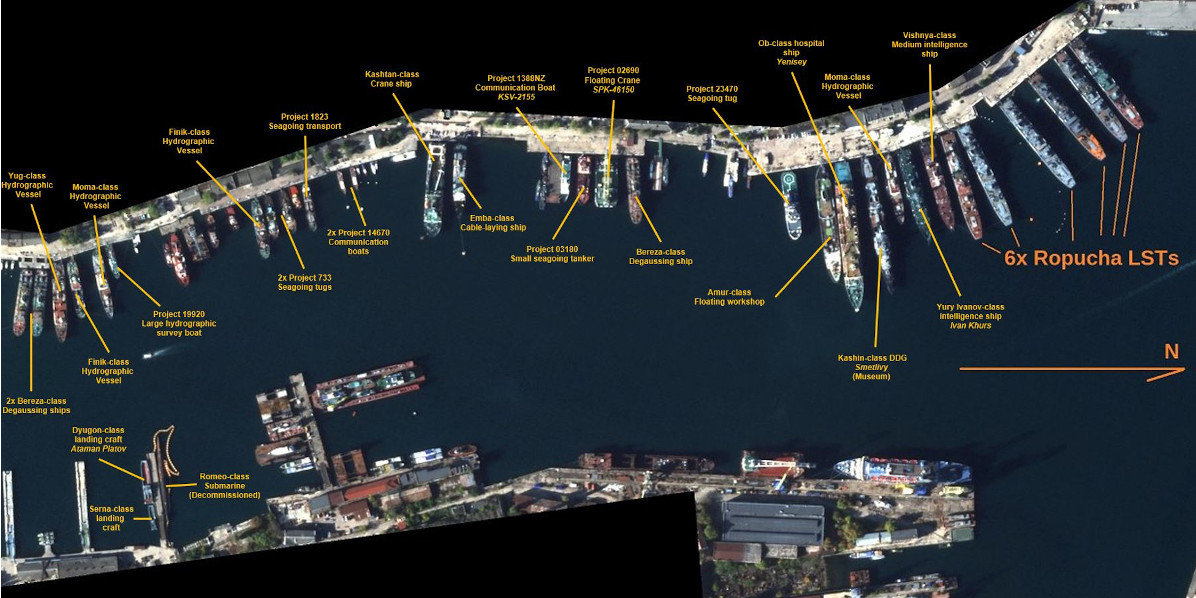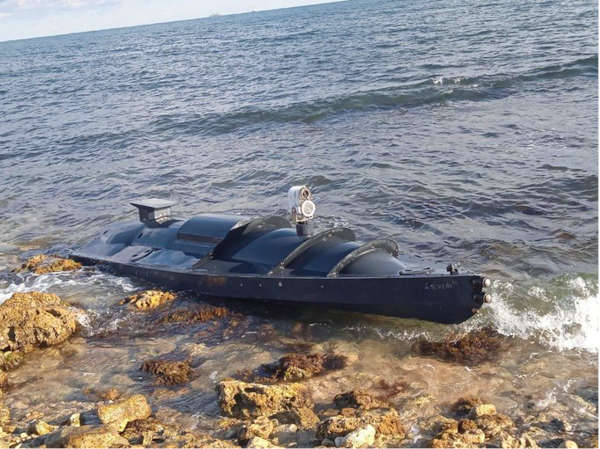In the picture
View of the port of Sevastopol on October 28, 2022, with vessel identification courtesy of @Torger78 [Planet Labs Inc. and @vcdgf555].
The Crimean port of Sevastopol, where part of the Russian Navy's Black Sea Fleet is stationed, was the victim of a surprise attack by several unmanned surface vehicles at the end of October, causing damage to several ships at anchor. Damage was reported to the frigate 'Admiral Makarov' (flagship of the Black Sea Fleet) and the minesweeper 'Ivan Golubets'. Open source intelligence expert circles point out that the damage was greater than declared by the Russian authorities. The attack, carried out by Ukraine, is a milestone in naval strategy, as was the one perpetrated by the British in Taranto, from which Japan learned for its action on Pearl Harbor.
The attack on the port of Sevastopol marks a turning point in naval strategy, with the use of such small USVs (Unmanned Surface Vehicles) capable of inflicting significant damage to anchored naval units. As analyst HI Sutton notes, the "conceptual simplicity" of USVs and their "relative sophistication set them apart from previous explosive vessels." Pending full clarification of the facts, the event has had several consequences. From entrance, the Russian Defense Ministry announced the immediate cancellation of the grain export agreement , claiming that the Black Sea Fleet ships that had just fallen victim to a "terrorist attack" are tasked with ensuring the security of the grain corridor as part of an international initiative to export agricultural products from Ukrainian ports.
However, beyond the immediate consequences - difficult to know exactly - several lessons can be drawn from what was the first massive attack that combined unmanned aerial and surface vehicles and used them as suicide drones against a fleet anchored in a port.
From Taranto to Sevastopol: History repeats itself
For those who have read about the naval battles of World War II, the characteristics of this event will remind them of one of the milestones that took place during that war: the British attack on the port of Taranto.
On the night of November 11-12, 1940, a dozen RAF bombers took off from the aircraft carrier 'HMS Illustrious' towards the Italian port of Taranto, where part of the Italian Regia Marina fleet was stationed. There, the British planes successfully surprised a fleet that had not contemplated the option of an air attack with torpedoes, and that watched helplessly as three of its battleships ('Littorio', 'Conte di Cavour' and 'Caio Duilio') and one Wayside Cross ('Gorizia') were severely bombed. This action with torpedoes, specially modified to operate in shallow waters such as those of Taranto, was something never seen before, and more than achieved its goal purpose. Hours later, the resounding success of an operation that left three of the aforementioned ships in dry dock for many months was confirmed, and sentenced the 'Conte di Cavour' to sink a few hours later, causing, in addition, significant psychological damage among the Italian admirals.
This event not only marked the beginning of the end for naval surface warfare, but also the beginning of a new era of air control of the seas. A little more than a year later, Admiral Yamamoto, who had studied this event carefully, would plan following this model the surprise attack on the US Navy's Pacific Fleet base that precipitated America's entry into the war: the attack on Pearl Harbor in December 1941.
The impact of both events resonates now, more than 80 years later, in the events of late October in the port of Sevastopol. Although on a smaller scale, the significance of this event merits highlighting several lessons that the Russian Navy - or any other - should draw from the events.


